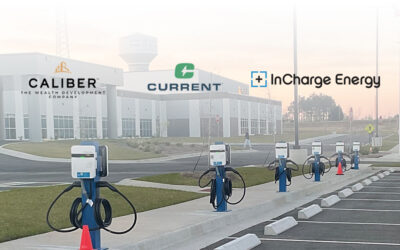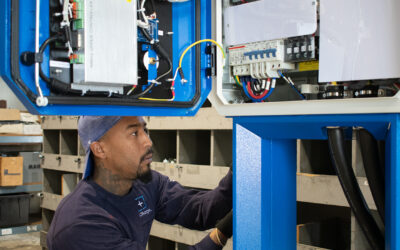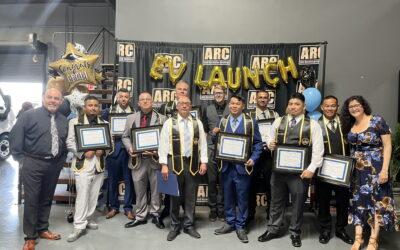A new electric school bus fleet will be ready to transport Moreno Valley students by fall.
The Moreno Valley Unified School District’s project will introduce 42 electric school buses and become the largest electric school bus fleet in California, InCharge Energy, the company that is installing electric vehicle chargers for the district, said in a news release. The new buses will serve more than 31,000 students and 42 schools.
The buses will replace a portion of the district’s current 117 diesel-powered buses. Moreno Valley school officials expect the buses to be running by Aug. 1, about a week before school starts Aug. 10.
Across California and the Inland Empire, electric buses are outnumbered by their diesel ancestors.
Of the approximately 25,000 school buses in the state, about 800 are electric, California Department of Education spokesperson Scott Roark said.
California’s Hybrid and Zero-Emission Truck and Bus Voucher Incentive Project reported that there are 52 electric school buses, 46 of them projected to be in operation — in Riverside County, making its count the fourth highest among California counties. San Bernardino County is not on its list.
Some large school systems, including the San Bernardino City Unified School District, don’t have electric buses. Others, such as the Riverside and Corona-Norco unified school districts plan to add them in the future, spokespeople said.
In Moreno Valley, the first round of electric buses will transport special-needs students and that is “another reason that this project is special,” school district Transportation Director Jim Burleson said.
The new electric buses will be quieter and offer a smoother ride, he said. According to the National Education Association, quieter surroundings help students with autism who can be hypersensitive to sensory stimuli.
This project has been in the works for over two years, said Burleson, who is excited to give students — especially special-needs youths — and bus drivers a healthier alternative to diesel school buses.
In the San Bernardino district, officials have looked into the possibility of electric buses, spokesperson Maria Garcia said, but the district’s “boundaries are so expansive that it’s not a viable option.”
Electric buses are good for the environment, too.
The energy to charge the buses will come from renewable energy since the district went solar two years ago.
“You can literally drive the kids with the sun,” Cameron Funk, chief executive officer of InCharge Energy, an EV charger manufacturer, said.
The city of Moreno Valley has a “moderate” rating on the Air Quality Index, according to theAirNow’s air-quality report.
Using high-powered fast chargers — which InCharge Energy officials said can charge a vehicle 80% quicker than a regular charger — the buses can fully charge in three to four hours, Funk said.
Electric vehicles have “significant emissions benefits over conventional vehicles,” according to the U.S. Department of Energy, because they produce zero tailpipe emissions.
Although electric vehicles typically cost more than gas vehicles, the expense can be offset by energy cost savings, federal tax credits and state incentives, the Department of Energy states on its website.
The 42 buses cost the district $5 million, but will save the district $600,000 a year in fuel and maintenance costs by switching to the electric buses, Burleson said. The district received $11 million in state and federal grant money to buy the new buses.
By MONSERRAT SOLIS | msolis@scng.com
Published: June 3, 2022 at 6:00 a.m. | Updated: June 3, 2022 at 6:01 a.m.



